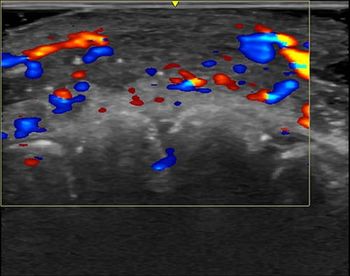
Higher CT Use Among Homeless Patients
Homeless patients suffering from seizures undergo more CT scans, largely due to lack of access to chronic care, leading to a higher radiation dose and cancer risk.
Due, in large part, to a lack of access to chronic disease management services, homeless patients are more likely to undergo a CT scan for a suspected or confirmed seizure in the emergency department.
Across western urban settings, homeless individuals have an eight-fold increased rate of epilepsy and seizures, and they frequently seek care in acute settings where there is little-to-no longitudinal knowledge about their condition. This leads to a much higher incidence of CT scans that can elevate their cumulative radiation dose.
“We found that homeless patients had a significantly increased number of presentations to the emergency department and a significantly higher number of head computed tomography, with a resulting increase in radiation exposure,” said a team from St. James Hospital in Dublin, Ireland, led by neurologist Elisabeth M. Doran. “Only receiving acute care for seizures leads to sub-optimal seizure control, which then leads to higher frequency of acute presentations.”
Doran’s team published their findings in the May 31 issue of
Related Content:
As part of an overall effort to improve healthcare delivery to homeless patients, the team detected this higher CT utilization among this group. To determine the severity of the problem, they examined anonymized data from 88 homeless patients who experienced seizures between 2015 and 2020 and compared it with data from a control group of 88 patients who were not homeless.
Based on their assessment, they found that homeless patients – who had a higher number of seizures related to substance abuse – averaged six visits to the emergency department for seizures while the control group – which was more likely to have an established epilepsy diagnosis – averaged one visit to the emergency department.
Overall, the cohort of homeless patients underwent 250 brain CTs over five years with a median radiation exposure of 4.3 mSv. Nine patients from the group had 10 or more CT brain scans within the five-year study period. That led to an exposure of at least 14 mSv for those patients, the team said – an equivalent to 700 plain X-rays. In contrast, no patients from the control group had 10 or more CT scans during the study period.
“We found that compared to housed patients, homeless patients had a considerably higher number of presentations to emergency departments and more frequent CT brain investigations, which led to a significantly increased radiation exposure,” the team explained. “As such, we estimate that some of the patients reach cumulative radiation exposure doses which put them at risk of radiation-induced cancer.”
Taking steps to improve access to epilepsy care – particularly specialist services – is one avenue to potentially lowering the number of times these homeless patients visit the emergency department, the team said. Working to integrate specialist services, such as remote consultation, into both the emergency and primary care settings could help augment care.
“If specialist services find ways to tailor their care more to the needs of this vulnerable population, we may be able to improve their seizure control and reduce the frequent [emergency department] admissions for seizures through that,” they said.
For more coverage based on industry expert insights and research, subscribe to the Diagnostic Imaging e-Newsletter
Newsletter
Stay at the forefront of radiology with the Diagnostic Imaging newsletter, delivering the latest news, clinical insights, and imaging advancements for today’s radiologists.




























